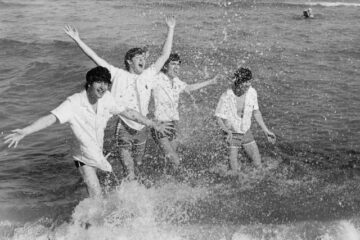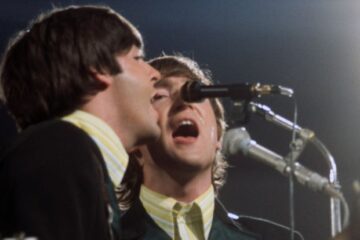The opening line to Steve Martin’s memoir reads, “I did stand-up comedy for eighteen years. Ten of those years were spent learning, four years were spent refining, and four were spent in wild success.” Success might have found The Beatles a little sooner in their trajectory, but artistically, the same sense of refinement and subsequent experimentation of the band is notable by degrees with each passing record and/or haircut.
After the honing ground of Hamburg, the band steadily rose to the unforeseen frenzy of Beatlemania, a phenomenon that has never been matched since. The enduring longevity of that success has cemented them as the best-selling artists in history, shifting an estimated 600 million albums worldwide, perhaps as many as four times the amount of Taylor Swift.
To contextualise this success further, when they released their debut single, the world’s population was only 3.1 billion, which means that 20% of the world’s population at the point of their pomp had technically bought one of their records. While that stat cooks the books a little, given that the population has skyrocketed since then (to 8.1 billion) and much of their sales have come from more recent times, even that sustained success is a symbol of the way they have transcended the usual boundaries of art and permeated society at large.
However, oddly enough, none of their individual records actually rank among the ten best-selling albums of all time. This peculiar fact also proves that their art didn’t become the benefactor of a brief fad, and they were embraced throughout their tenure for offering up progressive development with each fresh release. However, there was a point when it became clear that they were a commercial force—and the promise of cash skewed the picture.
Their least successful album provides a clear lesson in this. In 1963, as the wheels were just getting into motion, money started to trickle the way of the working-class lads for the first time in their lives. So, it didn’t take much convincing from Parlophone to follow up the success of their debut, Please Please Me, with their second outing, With the Beatles.
While it might have achieved the same feat and hit first in the UK charts, it received a limited release in the US and faltered towards a startling 179—a number that seems irreconcilable in retrospect. Ultimately, it was eclipsed on both sides of the ponds by what had come before and certainly by what lay ahead, too. Now, it is estimated that it has sold around 1.1 million copies, which is no mean feat, but it also places it in the last position in the ranking of commercial successes. For context, much talked about modern albums like My Beautiful Dark Twisted Fantasy (1.3 million copies sold) routinely fail to eclipse the figure by much.
What is The Beatles’ best-selling album?
Nevertheless, it is a worthy wooden spoon. The record suffered from chasing down further commercial gains and rushing out two albums in a year rather than whining their craft even further. As George Martin reflected, “I knew what they could do. I had seen all of their stuff at The Cavern. I said, ‘We need this album out very quickly. Why don’t you come into the studio and just roll it off, like a broadcast.’” Their tact further down the line would be the polar opposite, proving how they foisted changes upon culture in a wider sense.
The days of quick and easy pop were over, even if the sweet side of that still abounds endearingly on their least notable effort. The contrast is clear when it comes to their best-selling album, Sgt Pepper’s Lonely Hearts Club Band, which arrived only four years later.



